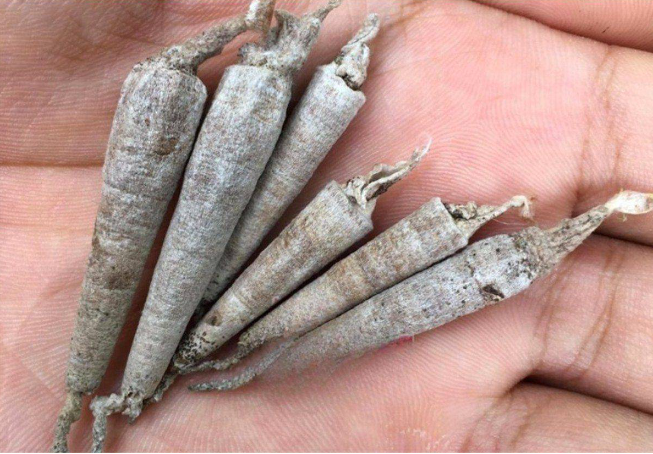Childhood is often romanticized as a time of carefree joy, but for many, it was marked by struggles and creativity born of necessity. Growing up with limited means meant that toys weren’t always store-bought or shiny. Instead, we found joy in the simple, often overlooked things around us. For those who experienced a humble upbringing, memories of making fun out of “trumpet worm nests” might just bring a smile. These small, seemingly insignificant items turned ordinary days into little adventures, proving that even the simplest moments can carry profound meaning.

Growing Up With Less: A World Without Store-Bought Toys
In the past, many families couldn’t afford an abundance of toys or fancy gadgets. Instead, children had to rely on creativity and resourcefulness to fill their playtime. Simple objects like sticks, rocks, and makeshift creations became the cornerstones of childhood fun. For some, this meant turning trumpet worm nests into an unexpected source of entertainment.
After a long day at school, kids would run home, not to gadgets or video games, but to the little treasures nature provided. Trumpet worm nests, small earthy formations left by these tiny creatures, became playthings, sparking imaginative games and adventures.
The Magic of Trumpet Worm Nests: A Forgotten Treasure
So, what exactly are trumpet worm nests? These small, tubular structures are made by trumpet worms as they burrow into mud or sand. For kids with rough childhoods, these nests were like little wonders waiting to be discovered. They represented nature’s puzzles and toys, ready to be explored and used for play.
The fun came from the challenge of finding the nests, imagining their origins, and sometimes even creating games around them. In a world without flashy distractions, these simple objects became a gateway to curiosity and creativity. They taught us to see magic in the mundane and find excitement in the ordinary.
The Role of Creativity in a Humble Childhood
When resources were scarce, creativity became a survival skill—and a source of joy. Turning trumpet worm nests into a pastime was just one example of how children from rough backgrounds made the most of what they had. It was about transforming limitations into opportunities for fun and connection.
Instead of longing for things we couldn’t have, we focused on what was available. This mindset extended beyond playtime, shaping how we approached challenges and relationships. It taught us resilience and the value of making do with what we had—a lesson that stayed with us well into adulthood.
Finding Joy Amid Hardship
For many children growing up in poverty, life was marked by daily struggles—empty lunchboxes, worn-out clothes, and the weight of responsibilities far beyond their years. Yet, even in those challenging times, moments of joy and lightness emerged. These weren’t grand gestures or expensive gifts but fleeting experiences that reminded us of the beauty in life.
The act of playing with trumpet worm nests after school became more than just a game. It was an escape, a brief respite from the hardships at home. It was proof that joy doesn’t have to come with a price tag. In those moments, children found freedom and creativity, turning the harshness of reality into a canvas for imagination.

Lessons from a Rough Childhood
Looking back, a rough childhood often brings a mix of emotions—gratitude, nostalgia, and perhaps a little sadness for the struggles endured. But one undeniable truth remains: those experiences shaped who we are today. They taught us to value what truly matters, to appreciate the little things, and to find strength in adversity.
Trumpet worm nests may seem like a trivial part of childhood, but they symbolize so much more. They remind us of a time when happiness wasn’t tied to material possessions. They represent a resourcefulness that many of us carry into our adult lives, using creativity and determination to overcome challenges.
The Forgotten Joys of Simple Play
In today’s world of screens and instant gratification, the idea of finding entertainment in something as simple as a trumpet worm nest might seem foreign. Yet, there’s something profoundly beautiful about the simplicity of those moments. They were unstructured, unscripted, and free—a kind of play that encouraged exploration and imagination.
Perhaps the joy of trumpet worm nests wasn’t just about the nests themselves but the act of finding them. It was about being outdoors, connecting with friends, and using our minds to create something out of nothing. In those moments, we learned to see the world differently—to find treasures where others saw none.
Conclusion: Celebrating the Resilience of a Rough Childhood
If you know what it means to play with trumpet worm nests, then you understand the unique resilience and creativity that comes with a rough childhood. Those humble beginnings may not have been easy, but they were rich in lessons and memories that shaped who you are today.
In a world that often measures success by possessions and appearances, those simple moments remind us of a deeper truth: happiness isn’t about what you have; it’s about how you see the world. For those of us who grew up finding joy in trumpet worm nests, we carry a gift that money can’t buy—a spirit of resourcefulness, gratitude, and the ability to find beauty in the smallest things.


